I want to create endless spiral in java like this:

I simply want to pass a number from 1-∞ and get it's spiral map.
Example:
getPoints(0); Would result in answer (0;0)
getPoints(5); Would result in answer (-1;0)
I want to create endless spiral in java like this:

I simply want to pass a number from 1-∞ and get it's spiral map.
Example:
getPoints(0); Would result in answer (0;0)
getPoints(5); Would result in answer (-1;0)
Think algorithmically. Identify the pattern.
The pattern is that you walk the circumference, one layer at a time.
(0,0).Now see the pattern:
So, now that you see the pattern, you can do it like this:
import java.util.Scanner;
class spiral
{
private static String getXZForMap(int np)
{
// (dx, dy) is a vector - direction in which we move right now
int dx = 0;
int dy = 1;
// length of current segment
int segment_length = 1;
// current position (x, y) and how much of current segment we passed
int x = 0;
int y = 0;
int segment_passed = 0;
if (np == 0){
return ("(" + y + ";" + x + ")");
}
for (int n = 0; n < np; ++n) {
// make a step, add 'direction' vector (dx, dy) to current position (x, y)
x += dx;
y += dy;
++segment_passed;
if (segment_passed == segment_length) {
// done with current segment
segment_passed = 0;
// 'rotate' directions
int buffer = dy;
dy = -dx;
dx = buffer;
// increase segment length if necessary
if (dx == 0) {
++segment_length;
}
}
}
return("(" + y + ";" + x + ")");
}
public static void main(String[] args){
Scanner sc = new Scanner(System.in);
int NUMBER_OF_POINTS = Integer.valueOf(args[0]); // or delete this line
String spiral_map = getXZForMap(NUMBER_OF_POINTS); // and put your int here
System.out.println(spiral_map);
}
}
Adapted from this answer: Algorithm for iterating over an outward spiral on a discrete 2D grid from the origin
Demo:
$ java spiral 0
(0;0)
$ java spiral 5
(-1;0)
public int[] getPoints(int n){
int[] k = new int[2];
if(n == 0){
k[0] = 0;
k[1] = 0;
return k;
}
n--;
int r = (int) (Math.floor((Math.sqrt(n + 1) -1) / 2) + 1);
int p = (8 * r * (r - 1)) / 2;
int a = (1 + n - p) % (r * 8);
switch ((int) Math.floor(a / (r * 2))) {
case 0:
k[0] = a - r;
k[1] = -r;
return k;
case 1:
k[0] = r;
k[1] = (a % (r * 2)) - r;
return k;
case 2:
k[0] = r - (a % (r * 2));
k[1] = r;
return k;
case 3:
k[0] = -r;
k[1] = r - (a % (r * 2));
return k;
}
return null;
}